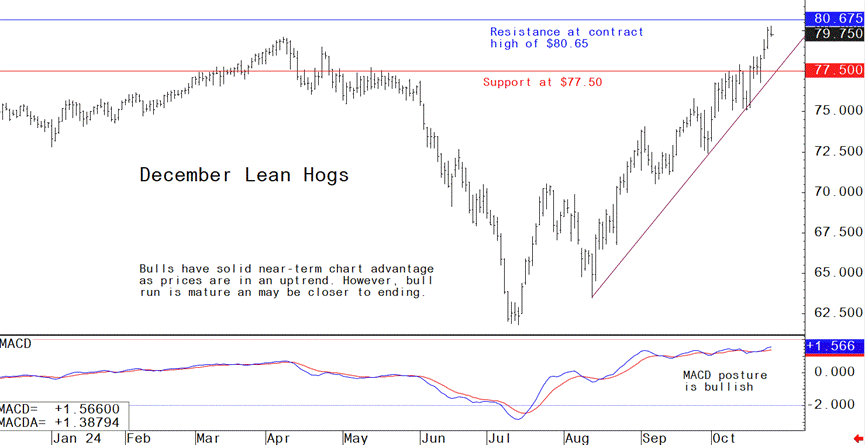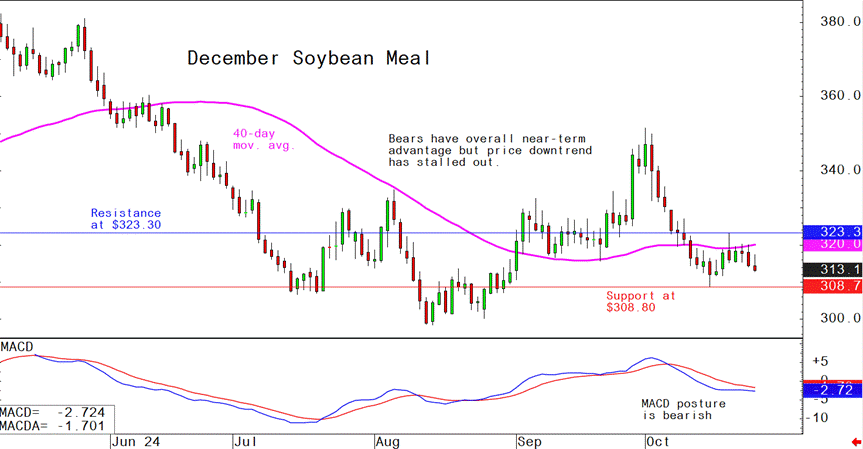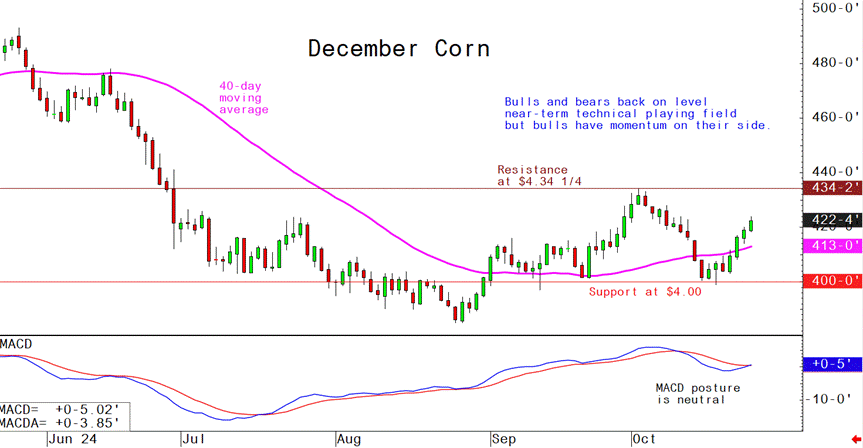



Pig outlook: Bulls run in lean hog futures rolls on
Jim Wyckoff reports on global pig newsDecember lean hog futures this week hit a 15-month high. Bulls are in solid technical control, but the bull run is mature now, suggesting the market may be close to topping out in the coming weeks. The contra-seasonal gains in lean hog futures are being fueled by strength in the cash hog and pork product markets. The latest CME lean hog index is up another 32 cents to $84.66 as of Oct. 22, the four straight daily gain. With US hog numbers continuing to fall far short of USDA forecasts for a 3.5% to 5% rise in hog supplies through the September-November period, as exemplified by slaughter totals falling below year-ago levels in four of the past five weeks, hog traders continue buying futures.
Latest USDA and other news regarding the global pork industry
Weekly USDA US pork export sales
Pork: Net US sales of 22,200 MT for 2024 were down 42 percent from the previous week and 45 percent from the prior 4-week average. Increases primarily for Mexico (17,000 MT, including decreases of 7,400 MT), China (8,800 MT, including decreases of 200 MT), Australia (4,700 MT, including decreases of 100 MT), South Korea (3,200 MT, including decreases of 4,900 MT), and Canada (1,300 MT, including decreases of 1,200 MT), were offset by reductions primarily for Japan (6,900 MT), Malaysia (2,300 MT), Colombia (1,800 MT), the Dominican Republic (1,600 MT), and Hong Kong (700 MT). Net sales of 1,000 MT for 2025 were reported for South Korea (700 MT) and Australia (300 MT). Exports of 32,100 MT were down 6 percent from the previous week, but up 16 percent from the prior 4-week average. The destinations were primarily to Mexico (11,900 MT), Japan (4,500 MT), China (4,100 MT), South Korea (2,600 MT), and Canada (2,100 MT).
China’s pork imports plunge in September amid falling consumer demand
China imported 100,000 MT of pork during September, half of the volume from August and 1.4% less than last year. Through the first nine months of this year, China imported 800,000 MT of pork, 37.3% less than the same period last year. Meanwhile, China’s pork production slipped 0.8% in the third quarter to 12.59 MMT, falling on an annual basis for a third consecutive quarter as poor meat consumption hampered slaughter rates. For the first nine months of the year, pork production fell 1.4% to 42.4 MMT. Meat demand has slowed in China, with shoppers tightening their belts to cope with a sluggish economy. Farmers slaughtered 520.3 million hogs during the first nine months of the year, down 3.2% from a year earlier. China’s pig herd at the end of September was down 3.5% from the previous year to 426.94 million head.
Advisory panel's draft dietary guidelines for 2025-2030: plant-focused, limit red meat; industry pushback
The Dietary Guidelines Advisory Committee (DGAC) is responsible for reviewing current nutrition science and providing recommendations for the Dietary Guidelines for Americans, which are updated every five years. The draft report for the 2025-2030 guidelines emphasizes several key dietary recommendations:
The committee's approach involves systematic reviews and food pattern modeling to assess the relationship between diet and health across different life stages. Additionally, a focus on health equity ensures that the guidelines are relevant to diverse populations, considering factors like socioeconomic status, race, ethnicity, and culture.
Julie Anna Potts, the president and CEO of the Meat Institute, expressed concerns about the draft recommendations. She described these recommendations as "alarming" and "disappointing," arguing that they contradict some of the Committee's other findings regarding nutritional deficiencies. Potts' criticism likely stems from the guidelines' emphasis on reducing the consumption of red and processed meats, which she believes could lead to nutritional gaps if not properly addressed.
The Meat Institute has historically advocated for the role of meat in a balanced diet, emphasizing its nutritional benefits. Potts' comments reflect a broader industry concern that reducing meat consumption could overlook the importance of meat as a source of essential nutrients, such as protein, iron, and B vitamins. The guidelines' focus on plant-based foods and limiting red meat may be seen by industry representatives as potentially neglecting these nutritional aspects.
The next week’s likely high-low price trading ranges:
December lean hog futures--$78.00 to 82.00 and with a sideways bias
December soybean meal futures--$308.80 to $323.30, and with a sideways bias
December corn futures--$4.00 to $4.34 1/4 and a sideways-higher bias
Latest analytical daily charts lean hog, soybean meal and corn futures












